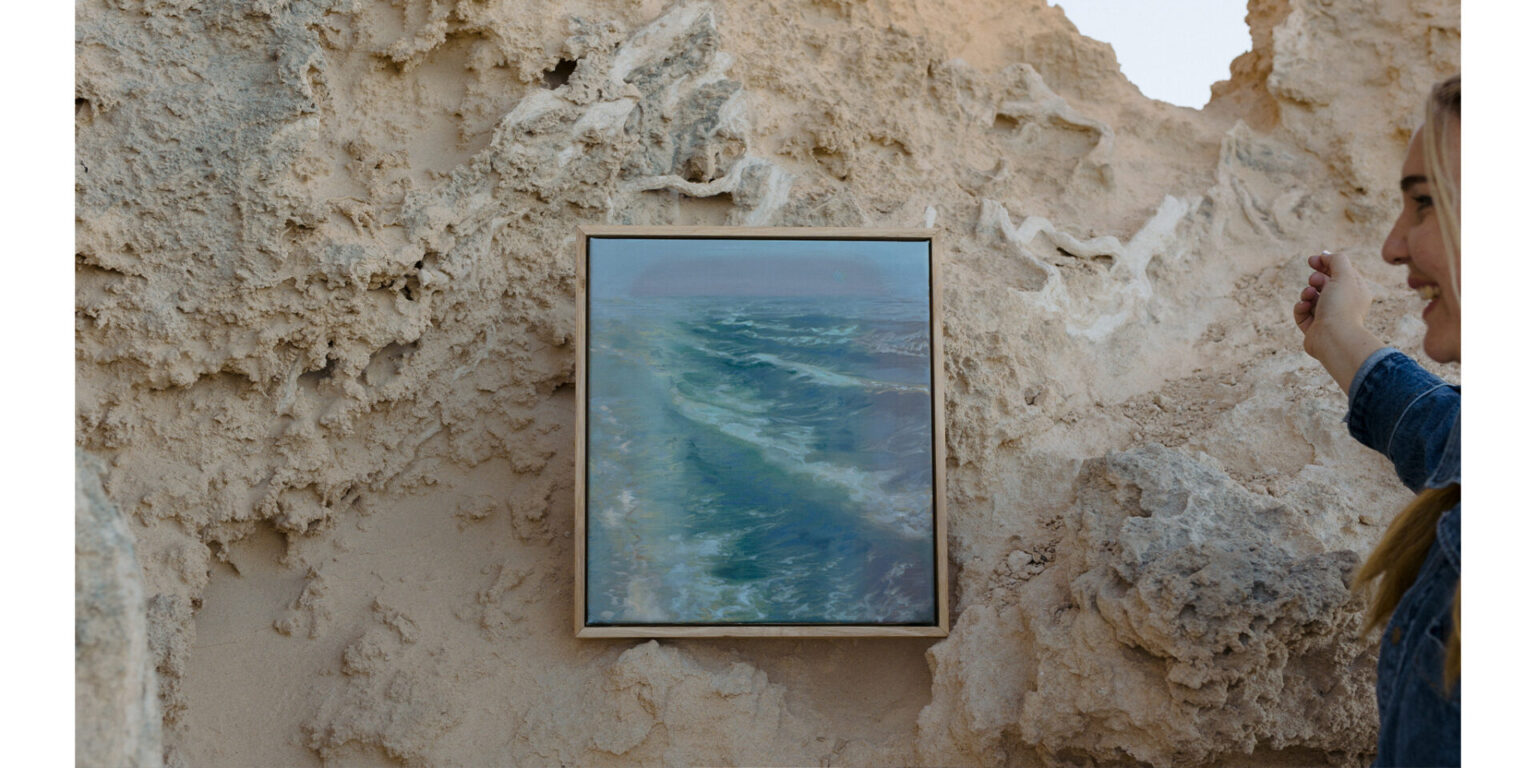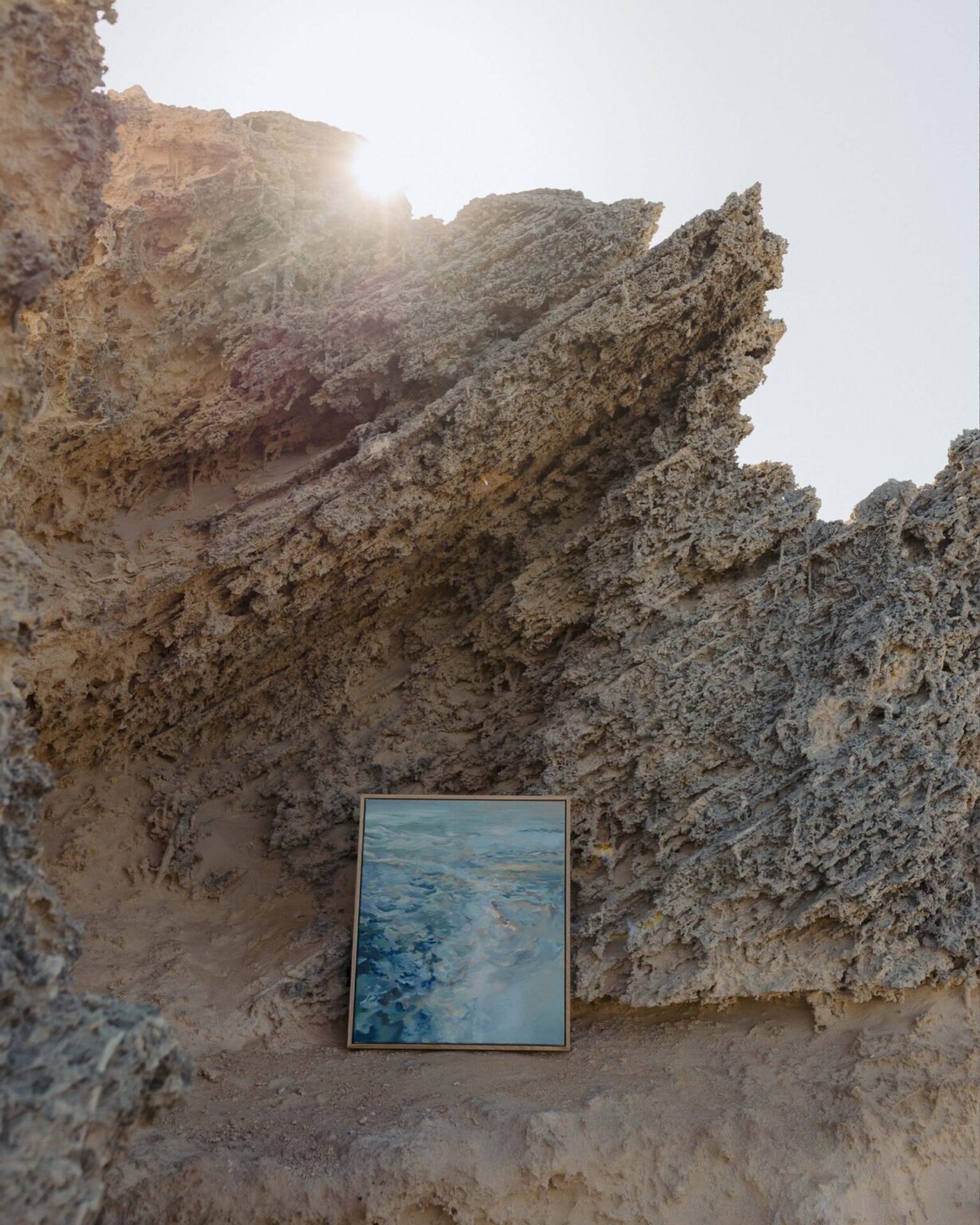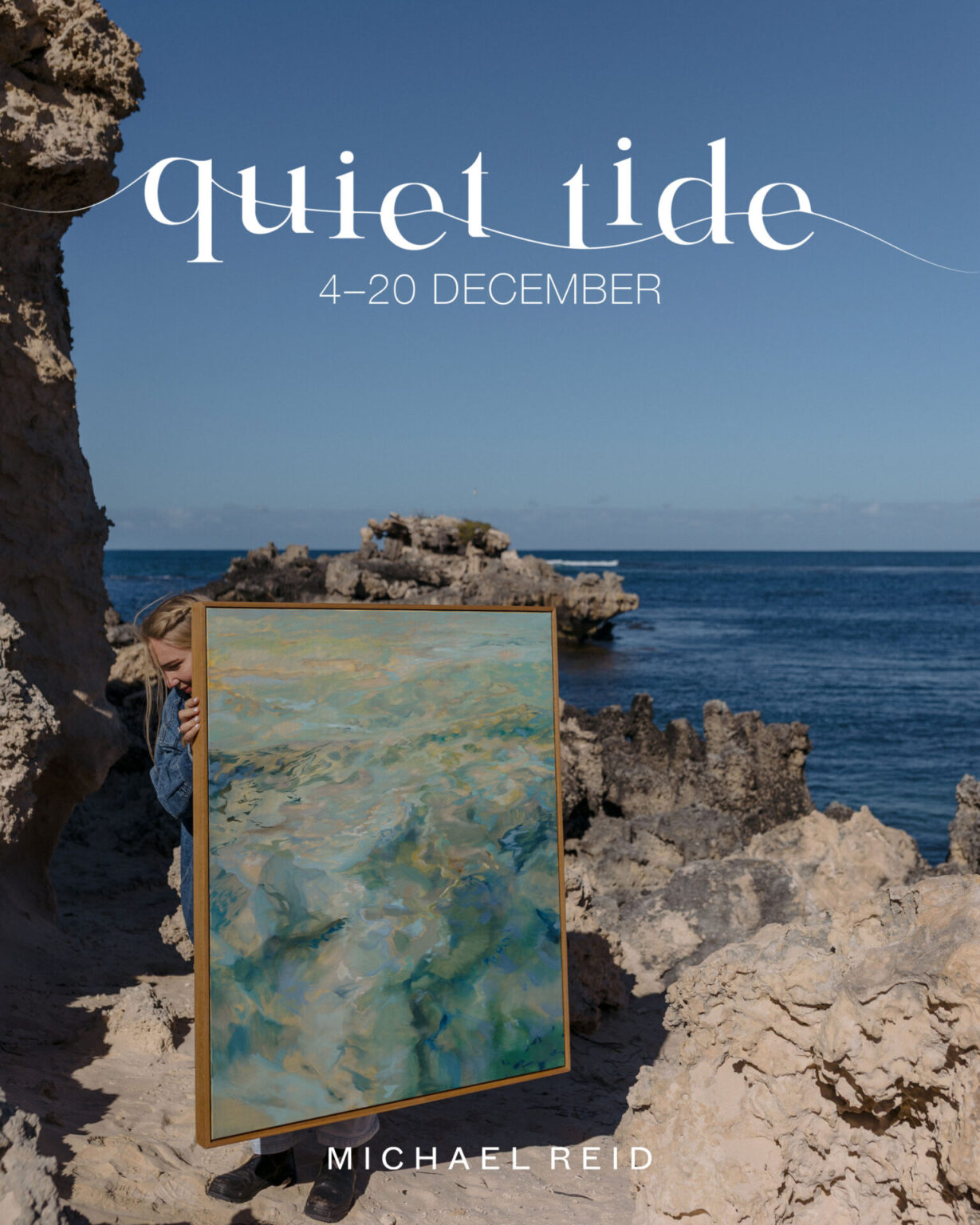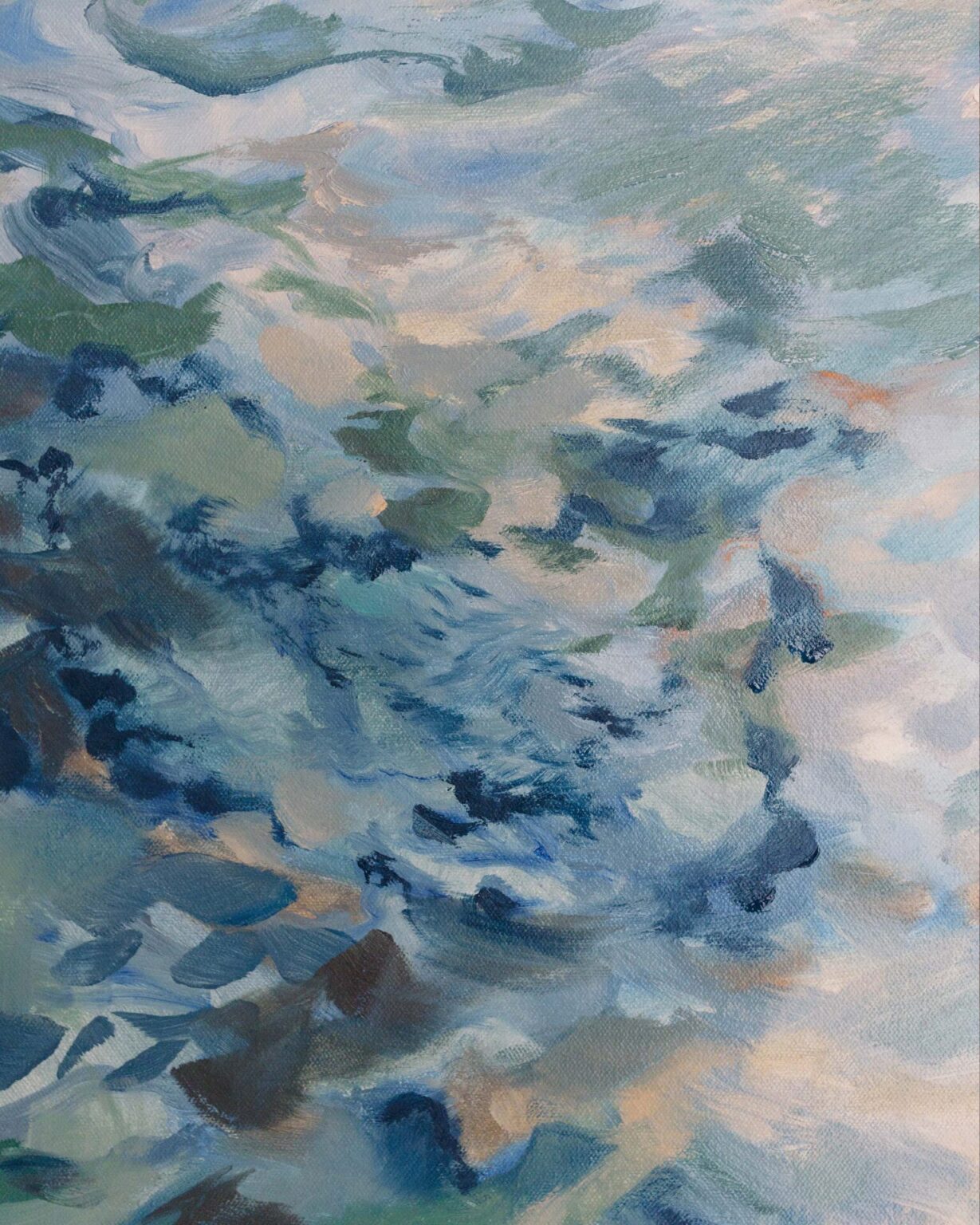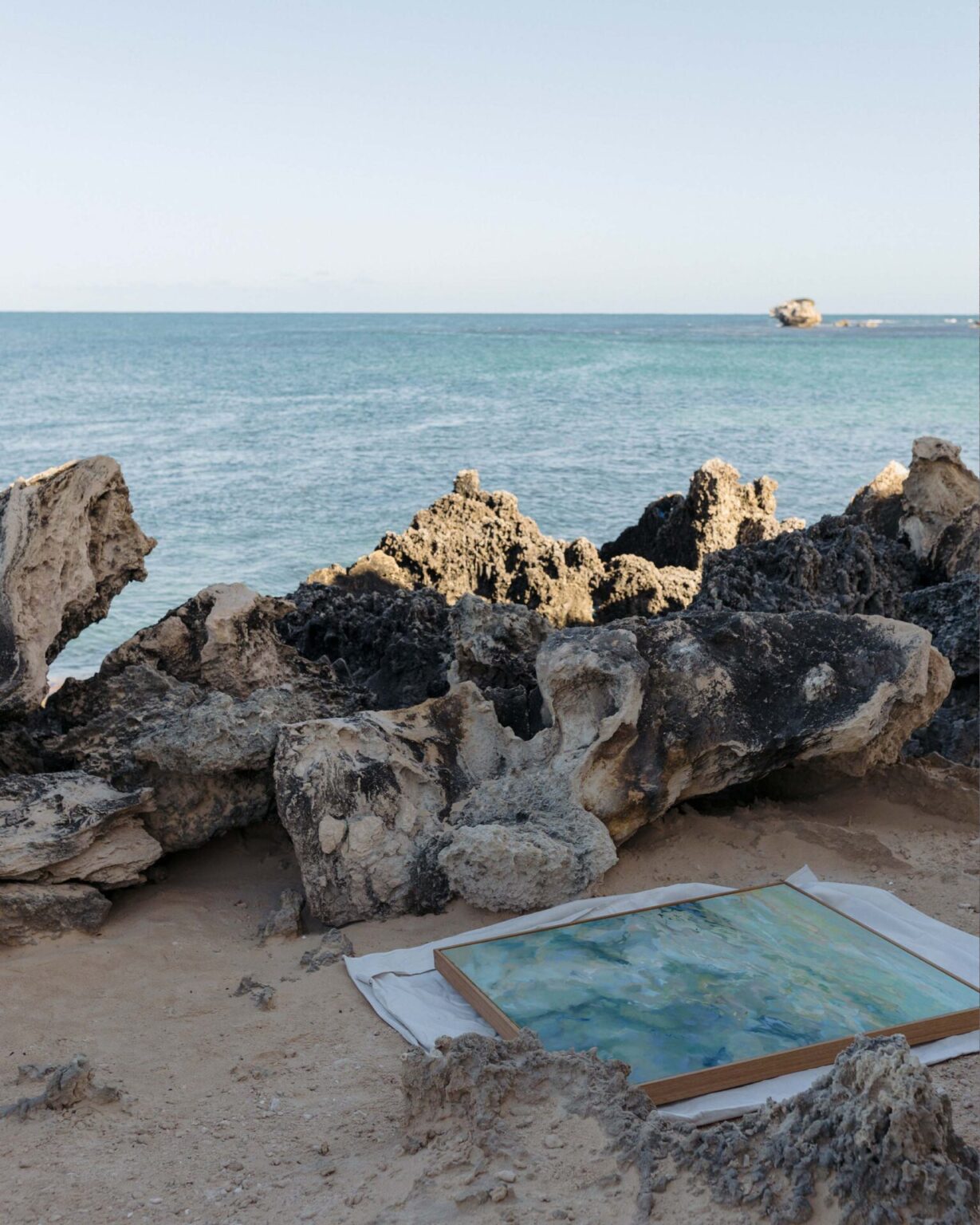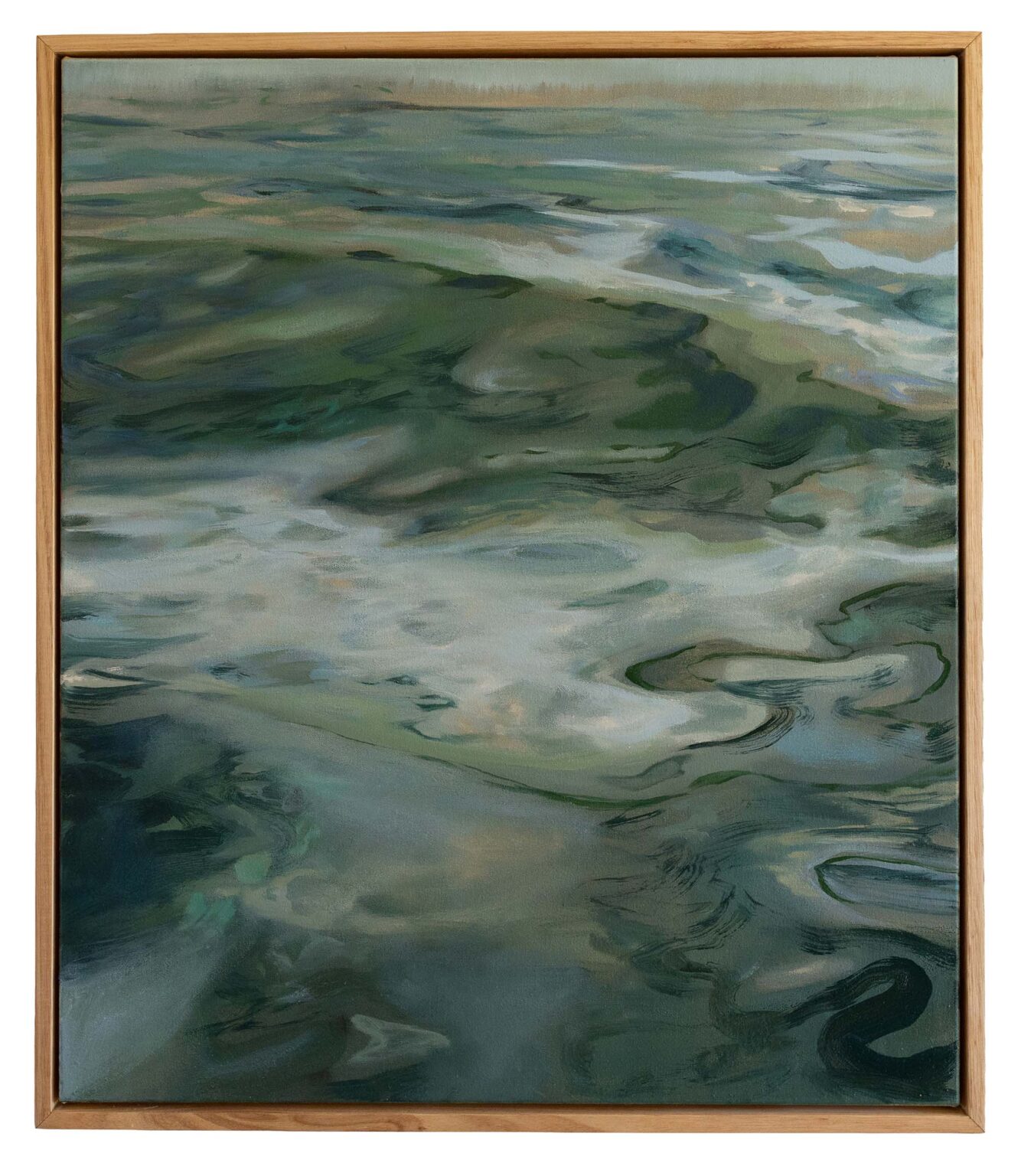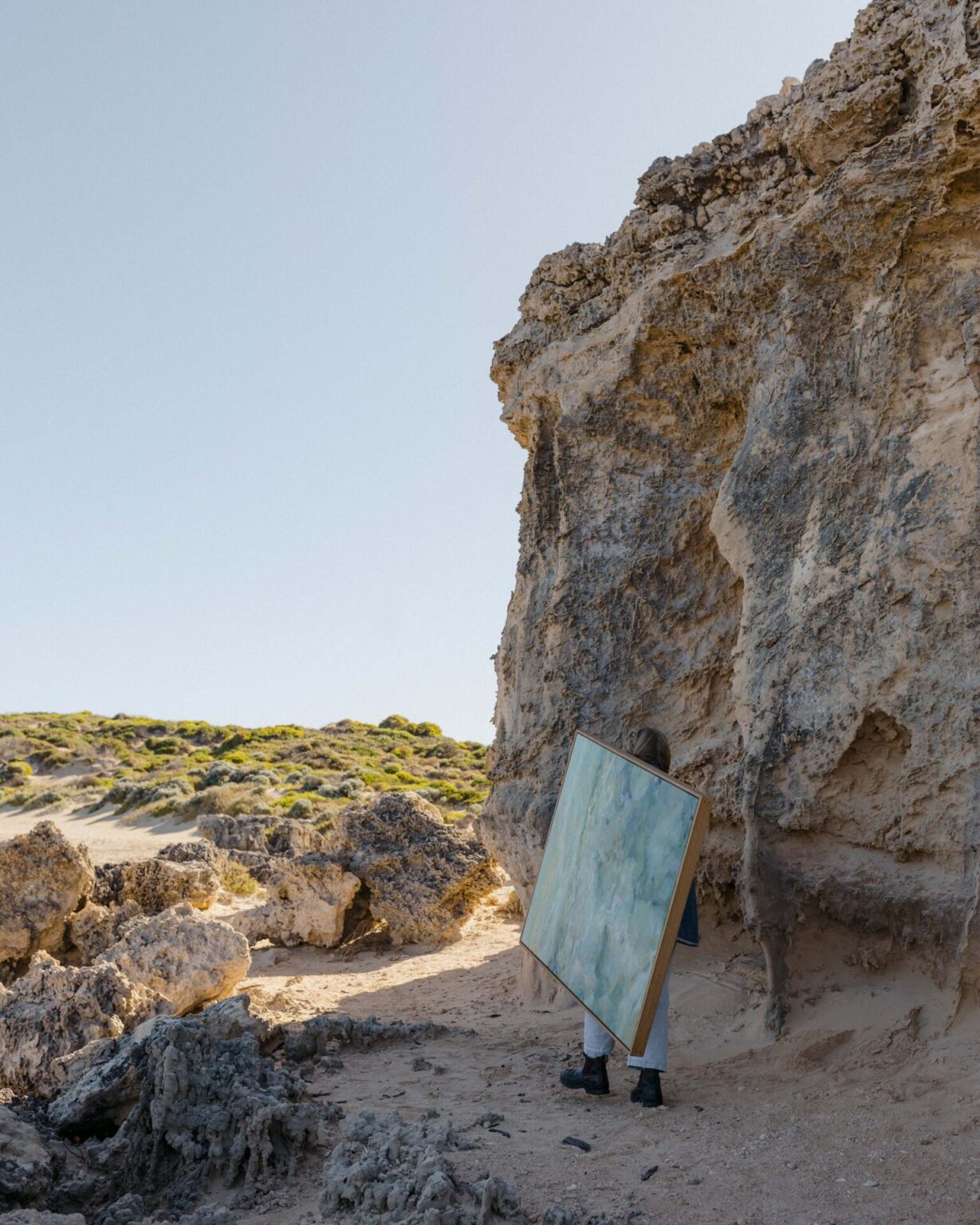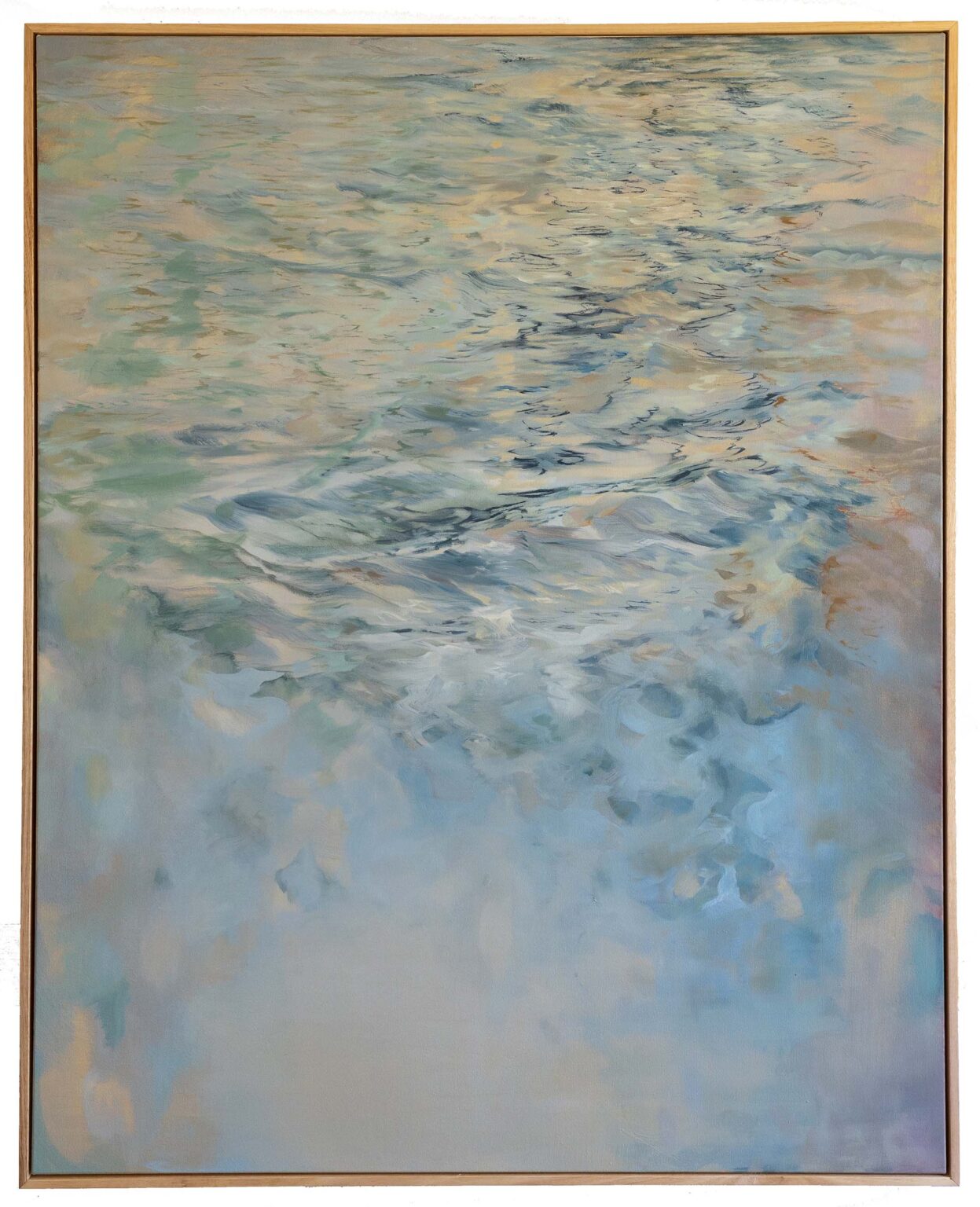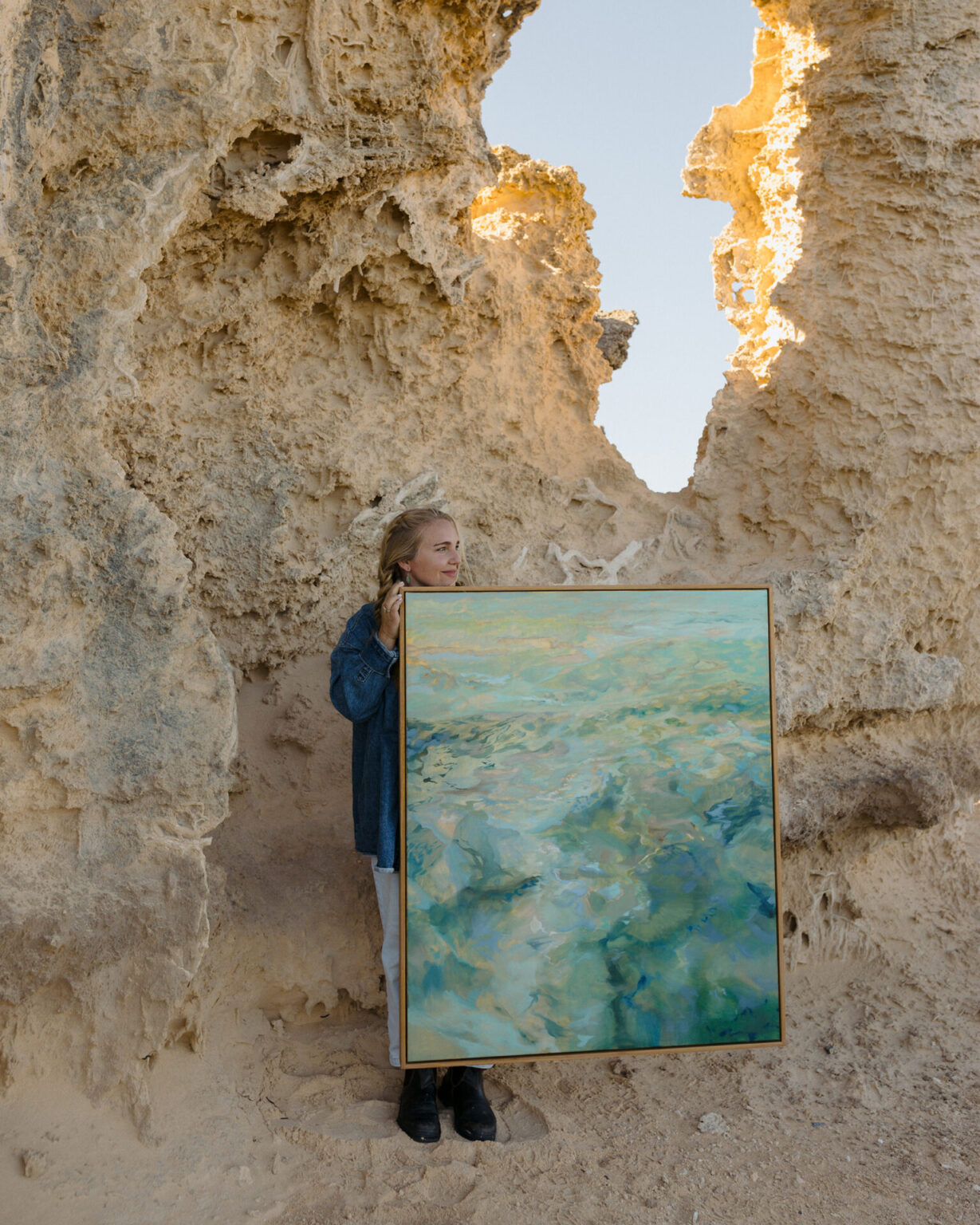Nicole Steenhof | Artist Profile
- Nicole Steenhof
- 4—21 Dec 2025
Shoalwater-based contemporary painter Nicole Steenhof joins our summer group exhibition, Quiet Tide, with a new series of paintings that emerge directly from her daily encounters with the sea. Propelled by an ongoing interest in ocean studies, Steenhof works towards an embodied painting process “alert to sensations beyond sight”, she says, developing ideas about how we might engage with “the agential life of the sea with tenderness, to relearn connection.” With this new collection, walking and swimming become quiet rituals of observation, informing subtly abstracted seascapes that hold a tension between what is seen and felt as the water shifts with the moon, light and seasonal currents. “Swimming is an anchor,” says Steenhof – a way for bodies to enter the sea and let “the motion of the saltwater dissolve edges.” This experience distilled is into subtle, tidal canvases that sit perfectly within the contemplative spirit of Quiet Tide.
Read our interview with Nicole Steenhof below. For private previews and priority access to works from Quiet Tide, please email sophienolan@michaelreid.com.au
Explore more from Quiet Tide HERE.
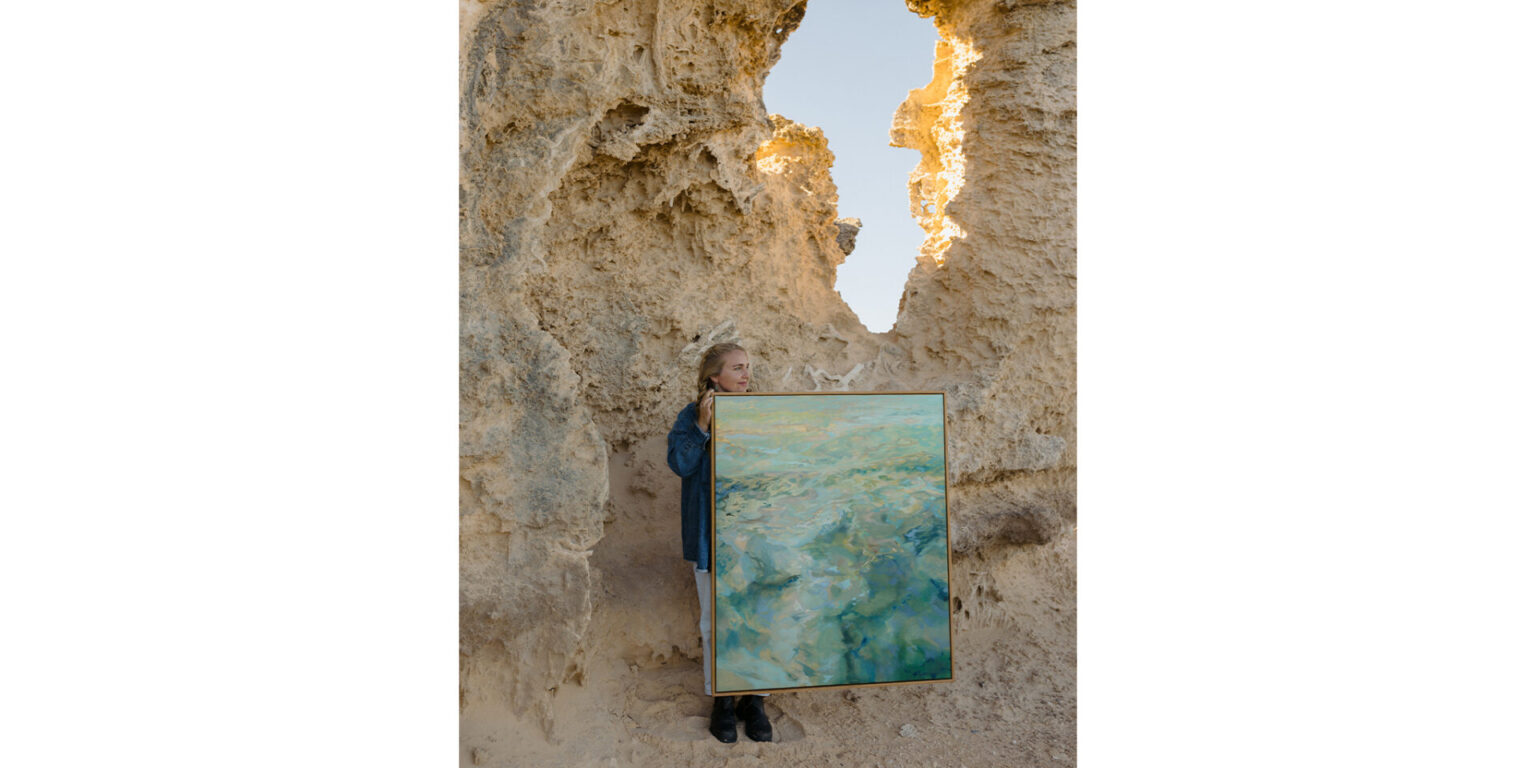
What were some of your early creative influences?
My earliest art memory is from childhood, visiting the Art Gallery of Western Australia (AGWA) during school holidays with my siblings and mum to see an exhibition called Monet and Japan. I remember loving the gradients of colour and refined confidence of line in Hokusai’s work, and the riot of abstraction in Monet’s close-up paintings. I liked how Monet’s work looked messy from close up and yet so resolved from afar. I’m definitely still striving to create a dynamic experience in engaging with artworks – the impact of the view from afar and the rewards that can be found when seeing the interactions of oil paints on linen or canvas up close.
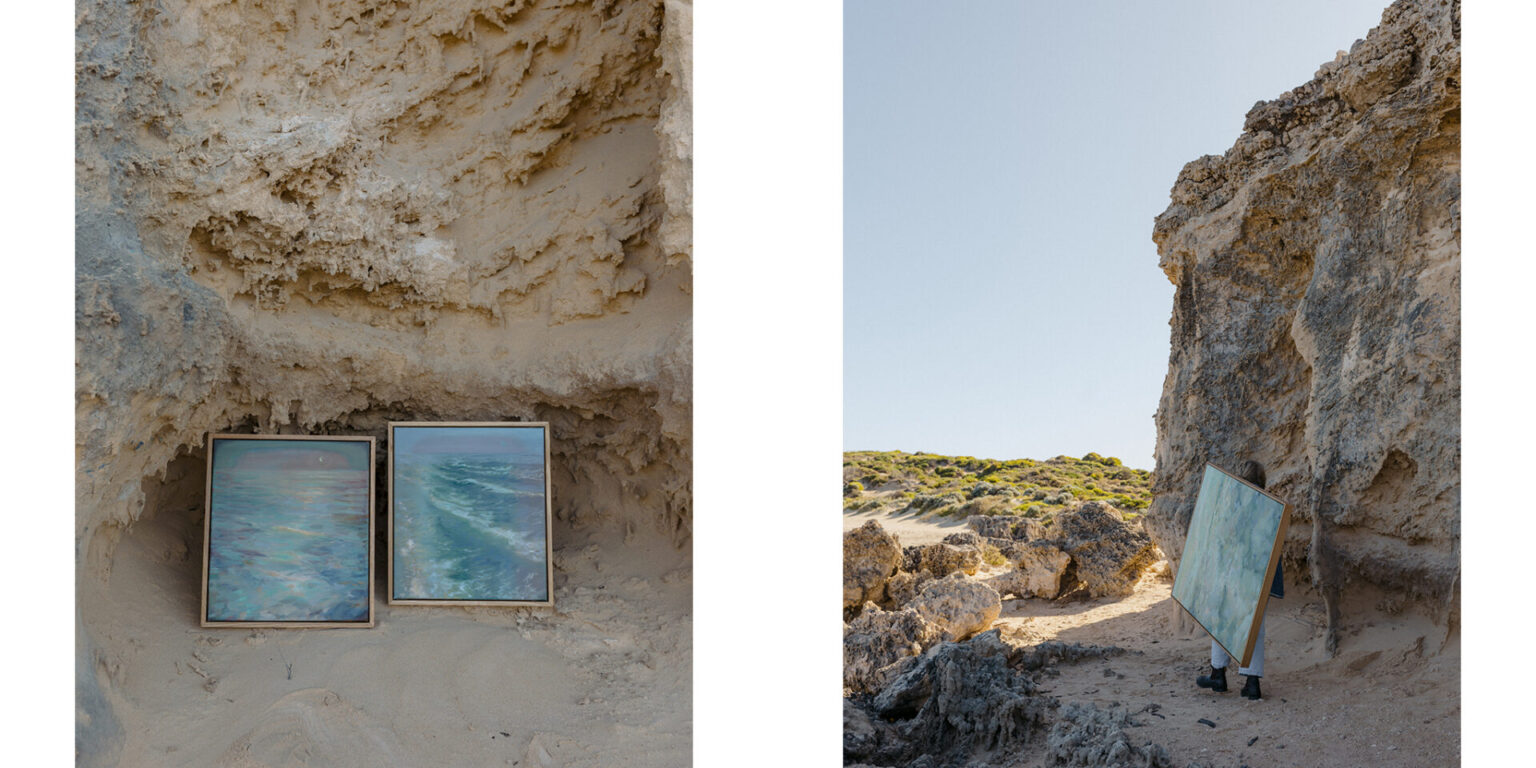
How did you develop your approach to painting? Are there themes, ideas, styles or techniques you often return to in your work?
The theme that I return to is the idea of the hydrocommons (a term that emerged from cultural theorist Astrida Neimanis). It acts as a watery lens through which to move – or be moved – through the world. It keeps me considering what it means to be a body of water residing beside the body of water that is the ocean, and below the hovering body of water that is the atmosphere. It keeps me mindful of the delicate balance of life on this planet that needs water in all forms, with different levels of salinity, temperature and density to keep the world alive – as beautifully written about by Helen Czerski in her book The Blue Machine. The ocean is continually wonderful. The ocean as a subject acts like a kind of portal for me into the world of painting.
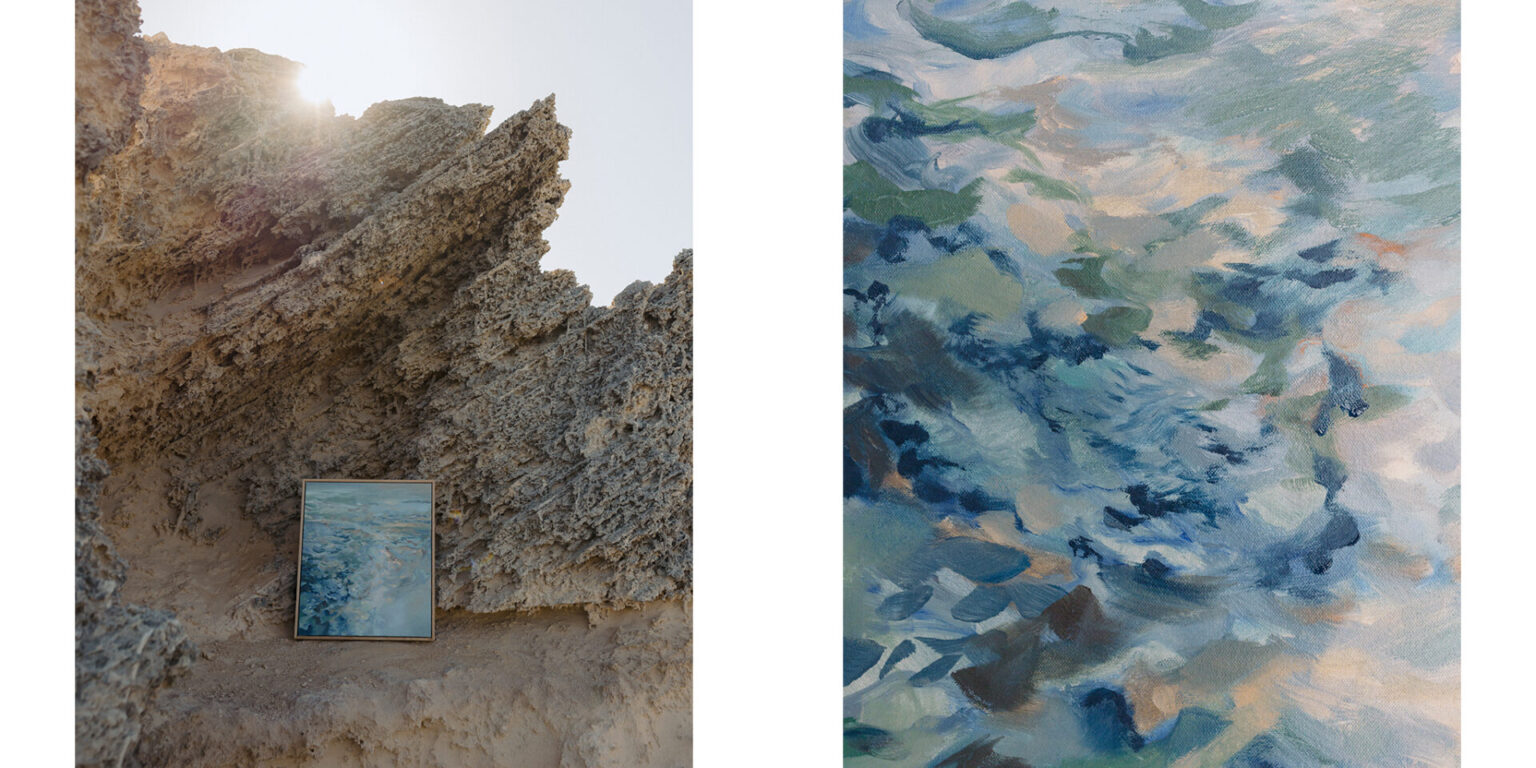
What was the starting point for your new series and how did the work evolve?
Surface and submersion, movement and stillness, the pull of the moon, the tide. Morning walks along the coast and sea swims bring me into awareness of my senses – not just sight, but also the sensation of water on skin, the new air of the morning in my lungs, the smell of salt and seaweed, and the sound of the ocean roaring on the back reef and lapping over the shifting sandbars. Later in the day, during my studio time, I recall what it was that seemed wonderful to me, and bring it to the paintings. I want to work with the orientation that sight gives and then melt it into the sensations of swimming – anchoring the world of abstraction in a connection to the surface of the sea. Or, paradoxically, when sight feels overwhelming, remembering the groundedness of being in the water as an anchor for the changing surfaces of the sea. It can work both ways.
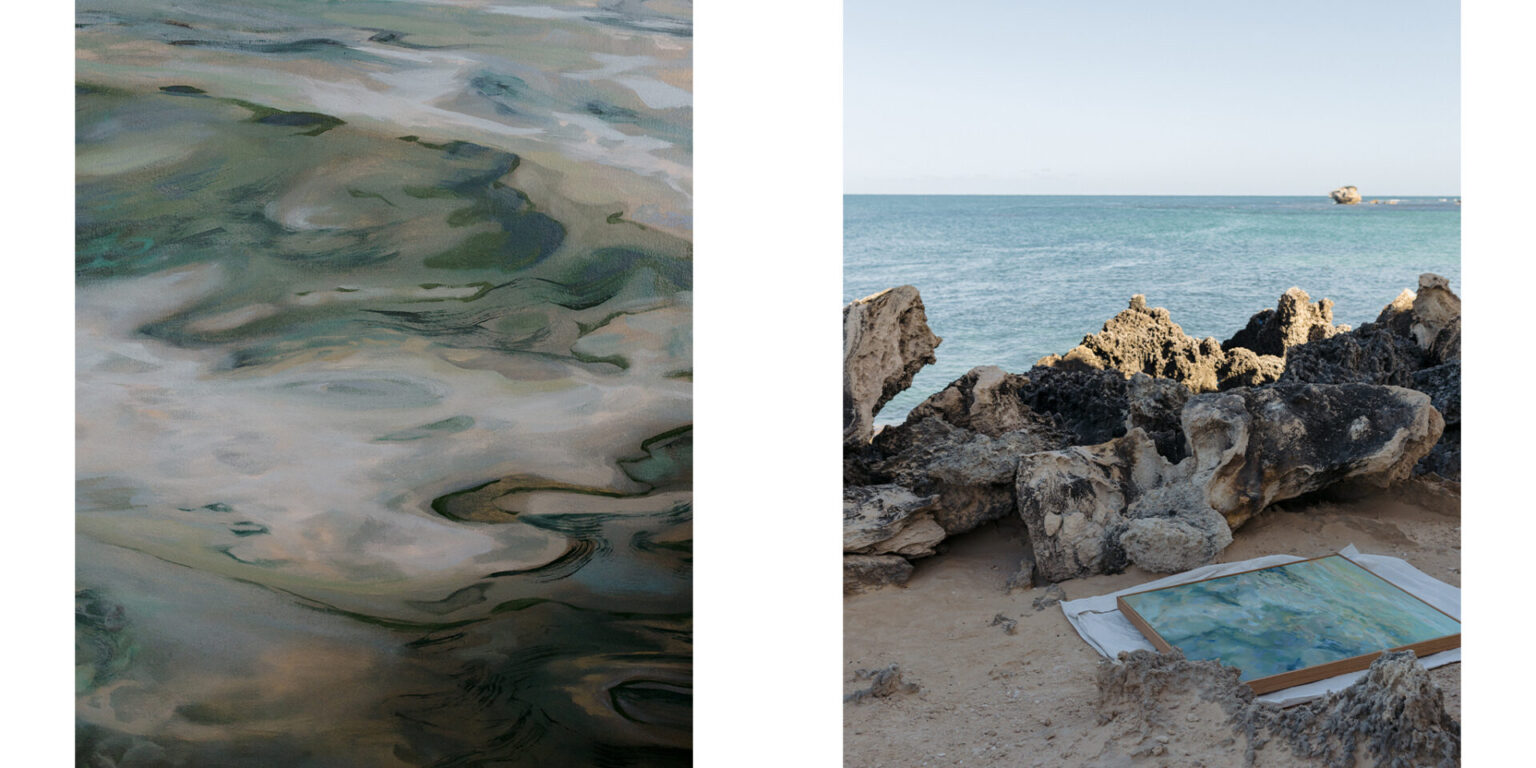
How does the series build on your previous work?
I’ve been painting the ocean in various forms for more than ten years, and there is always a new way to express interactions with the sea. The exhibition prior to this one was inspired by the galaxy that exists within abalone shells, and it really helped unhook my use of colour. I feel that this collection has benefited from that studio discovery.
Could you tell us about some of your favourite works from the series?
I enjoy A Quiet Wash for its subtlety, with its space for the absent moon – remembering that what can’t be seen is still present, like stars in the daytime – and I enjoyed painting the shifting colours over the surface of the sea. The sea picks up the colours of what is around it in its glossy surface, and often in a wide expanse of sea the colours on the surface change. Its effect in the painting reminds me of light bleeds in camera film – an unintended surprise. The idea of corridors of light and colour appears in other paintings in this collection too, as in Surface and Submersion and The Skin of Light Between Us. A Long Swim is a celebration of being in the water, and I felt happy to be near its unbridled colour.
